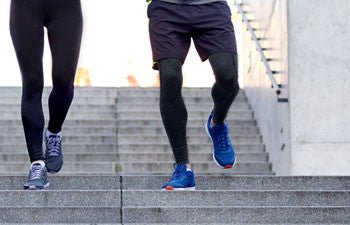The 10,000 Miraculous Steps

10,000 steps a day
In our previous blog post, the Benefits of walking, we found out that walking is the simplest and easiest form of exercise to keep your body active and healthy. Researchers have identified that a constant speed of 4 km/h is the perfect walking pace to “burn fat”. But, what is the ideal number of steps?
A few years ago the World Health Organization launched the slogan “10,000 steps a day”. Research found that walking 10,000 steps a day will significantly improve your health. Putting one foot in front of the other can help keep your weight under control, prevent diabetes, hypertension, stress, obesity, osteoporosis, and risk of stroke, as well as build stamina, burn excess calories and give you a healthier heart.
How far is 10,000 steps?
For many of us the question is How far is 10,000 steps?
It might sound like a lot but, in reality the average person already walks between 3,000 and 4,000 steps per day. The average person’s stride length is approximately 2.5 feet long. That means it takes just over 2,000 steps to walk one mile, the equivalent of around 15 minutes brisk walking. For most of us 10,000 steps is close to 5 miles. I can almost hear you gasp and say: “wow, that’s a lot. How do I fit all that walking into my busy day?”.
Reaching 10,000 steps per day is not as far-fetched as you might think. To find out how many steps you already take each day, buy a pedometer. You can get a simple one that tracks steps for just a few pounds.
You would need to start making some changes to the way you do things but, a reasonable goal for most people is to increase your average daily steps each week until you can easily average 10,000 steps per day.
There are many ways to increases your daily steps. Try these tips for getting more steps into your life:
- Take a regular walk
- Walk the children to school
- Walk part of your journey to work
- Use the stairs instead of the lift
- Leave the car behind for short journeys
- Go for a stroll with family or friends
- Leave the office at lunchtime. A short walk will make you feel more energised
- Park further away from the supermarket - those extra steps all add up
Mix it up, use your imagination and come up with your own list.
It takes a while for a regular activity to become a healthy habit. Make it your goal! It could be your personal “10,000 steps challenge”.
How can far infrared clothing help?
Far infrared clothing will interact with the human body, promoting body stimulation. A pair of far infrared socks is ideal to improve blood circulation in the lower limbs. Increased circulation nourishes the cells with higher levels of oxygen, further improving cell health. Enhanced cell metabolism means stamina and endurance are increased. Post-exercise recovery time is almost halved. The re-absorption of lactic acid is considerably quicker, reducing soreness and muscle fatigue. For more serious walkers, a pair of leggings, which can also be used as a base layer, are a must for quicker recovery. If your joints ache you might want to look into the body support range for a pair of ankle or knee supports.
